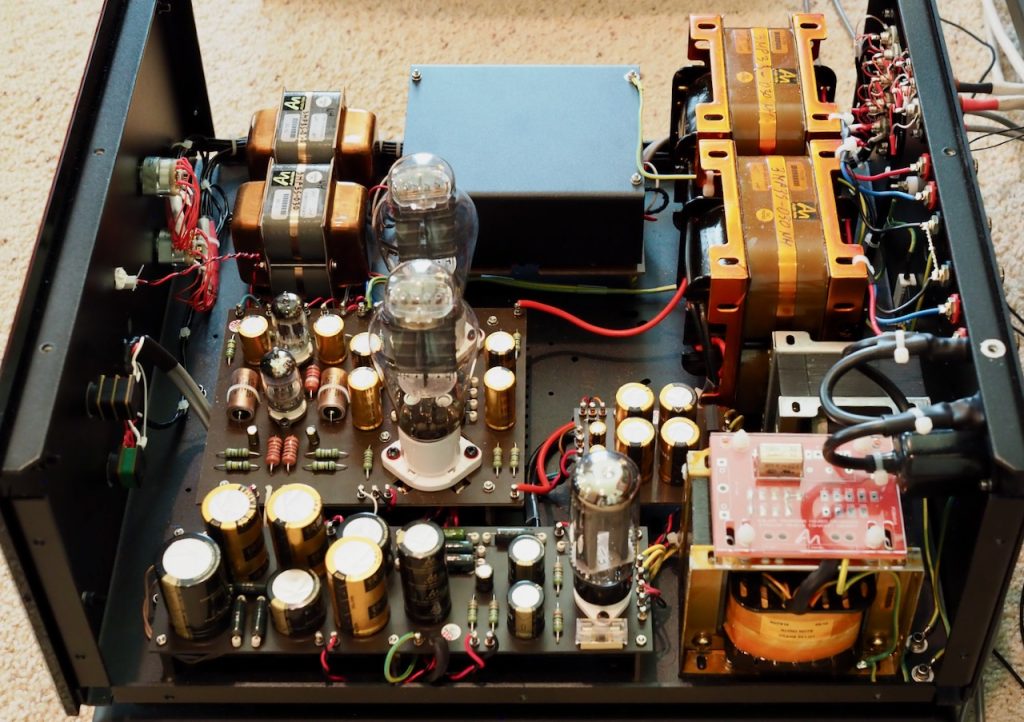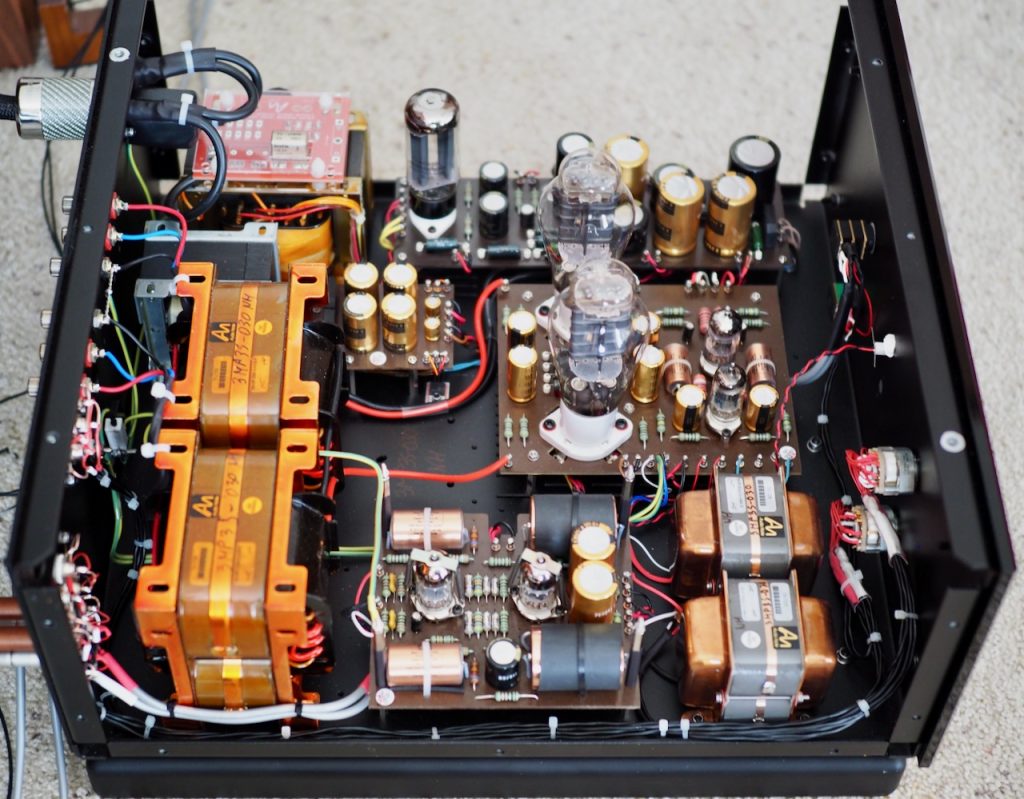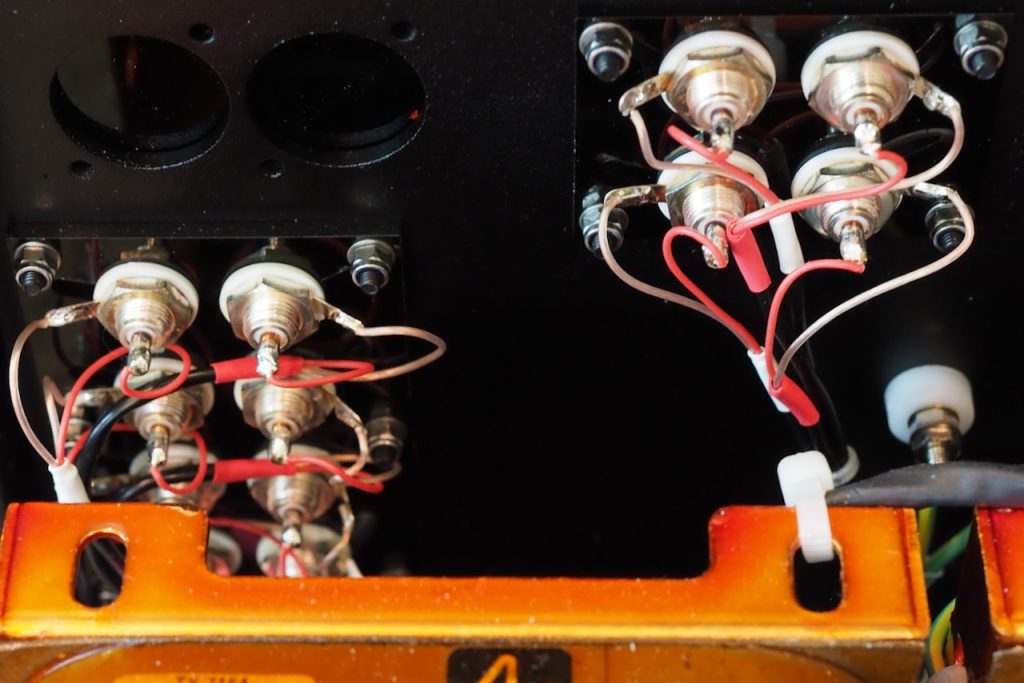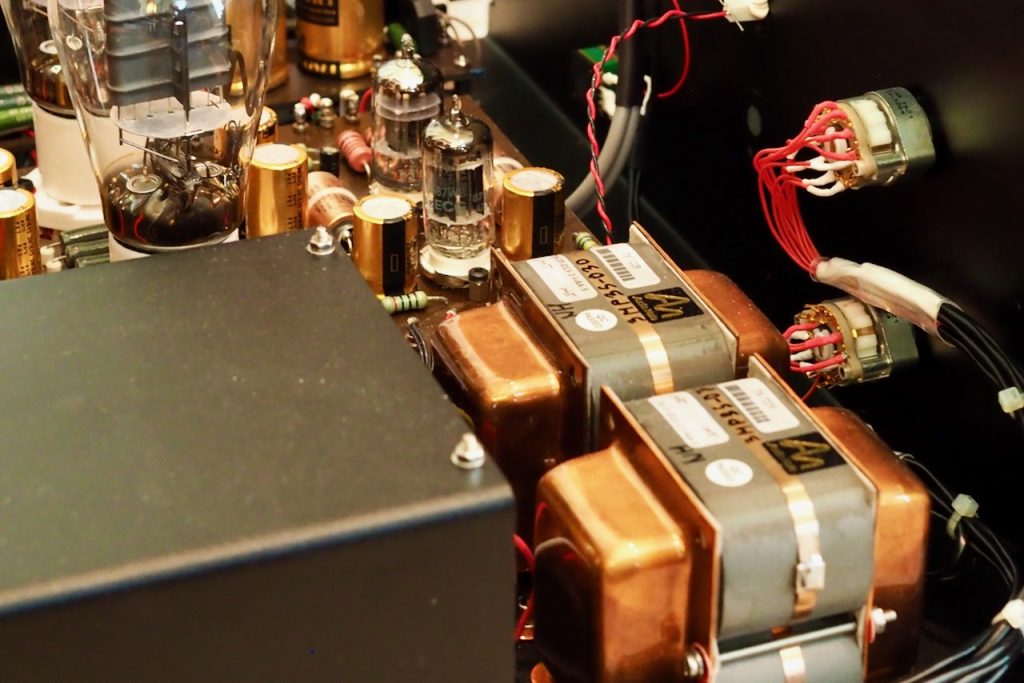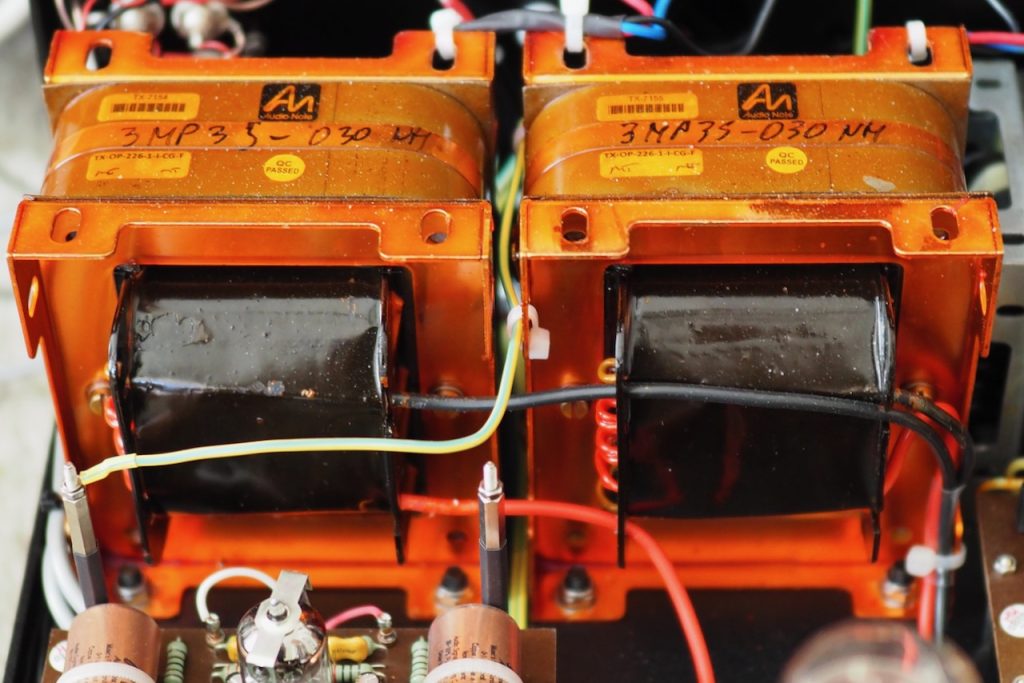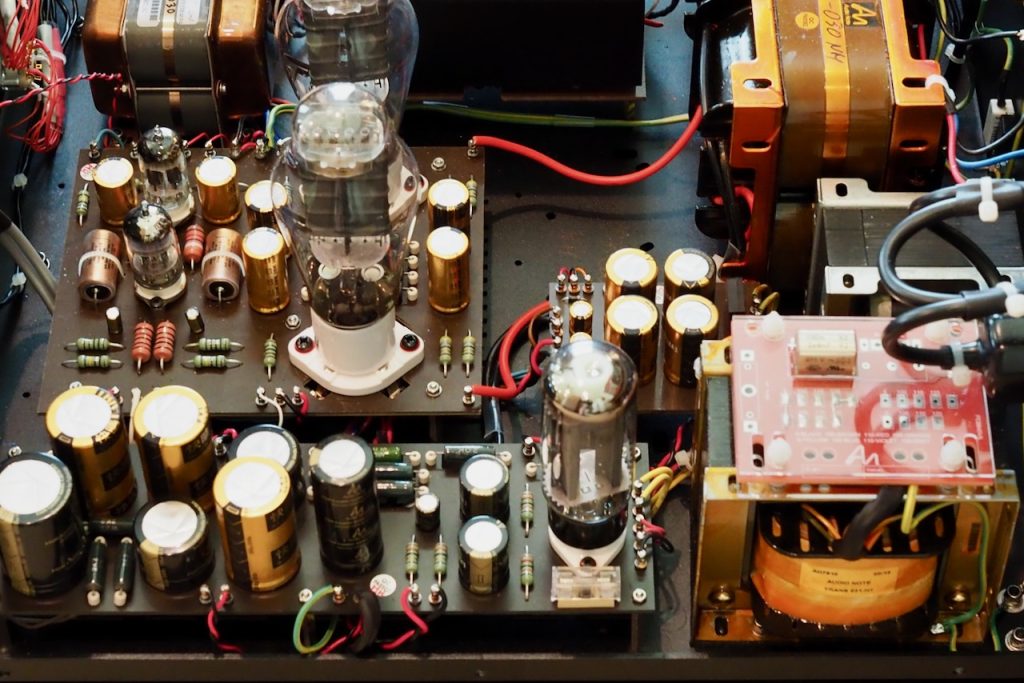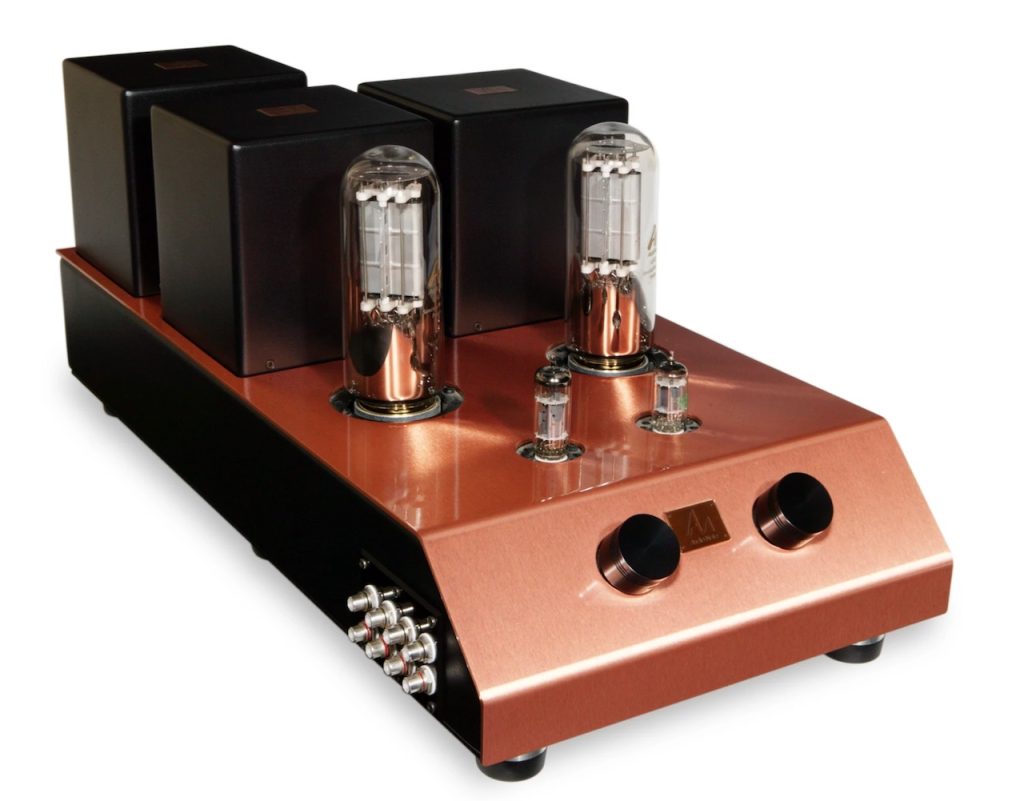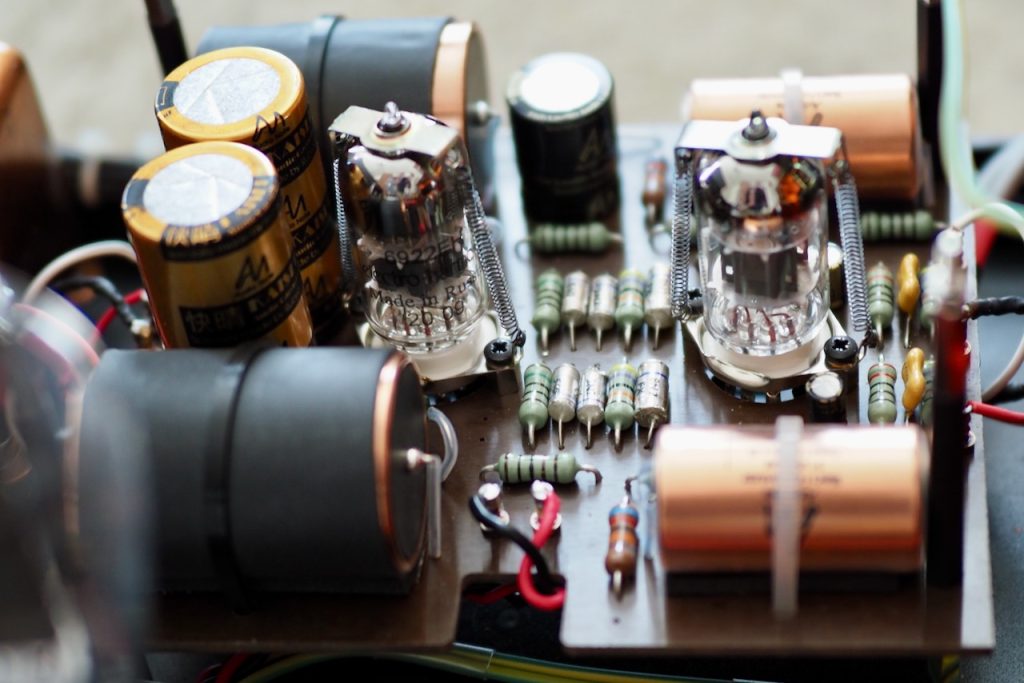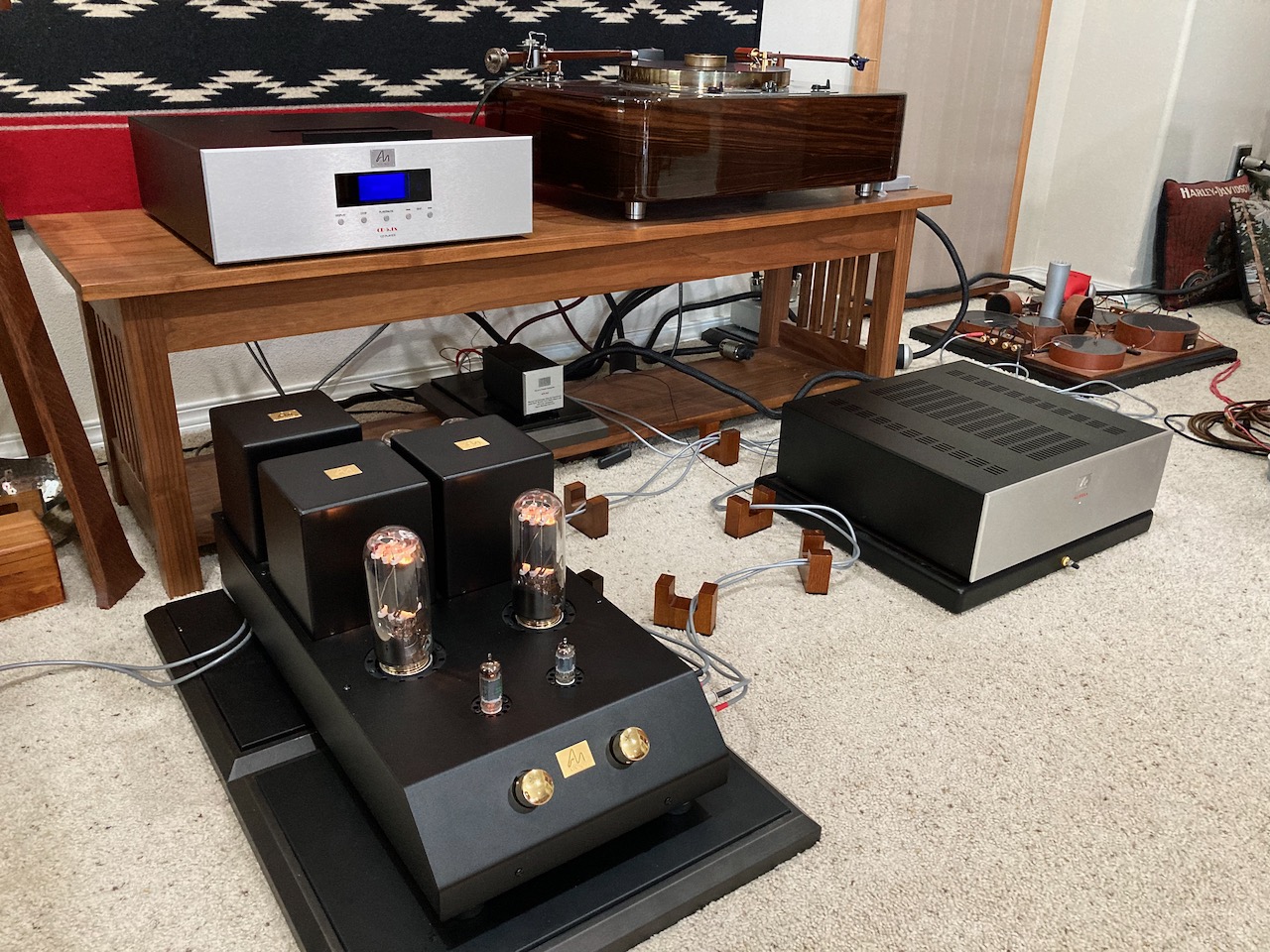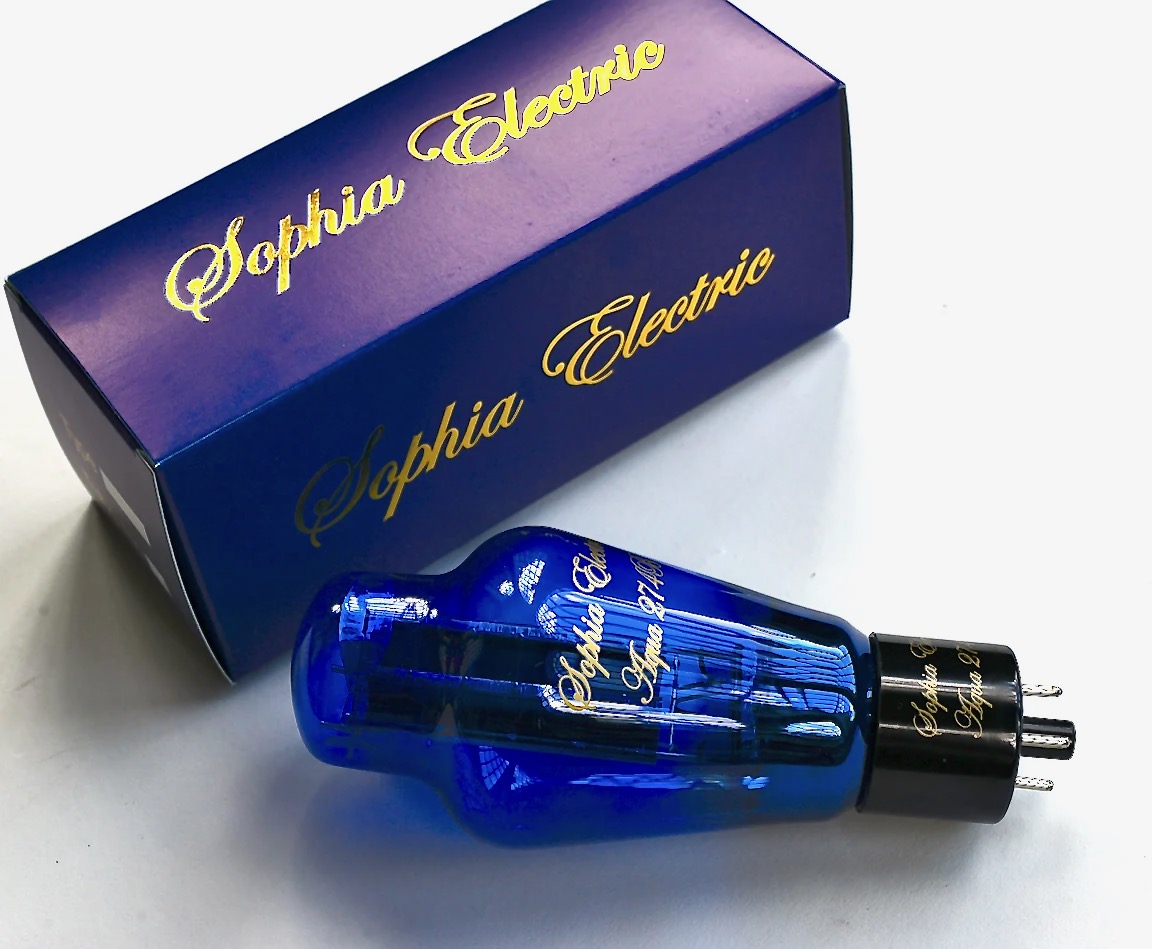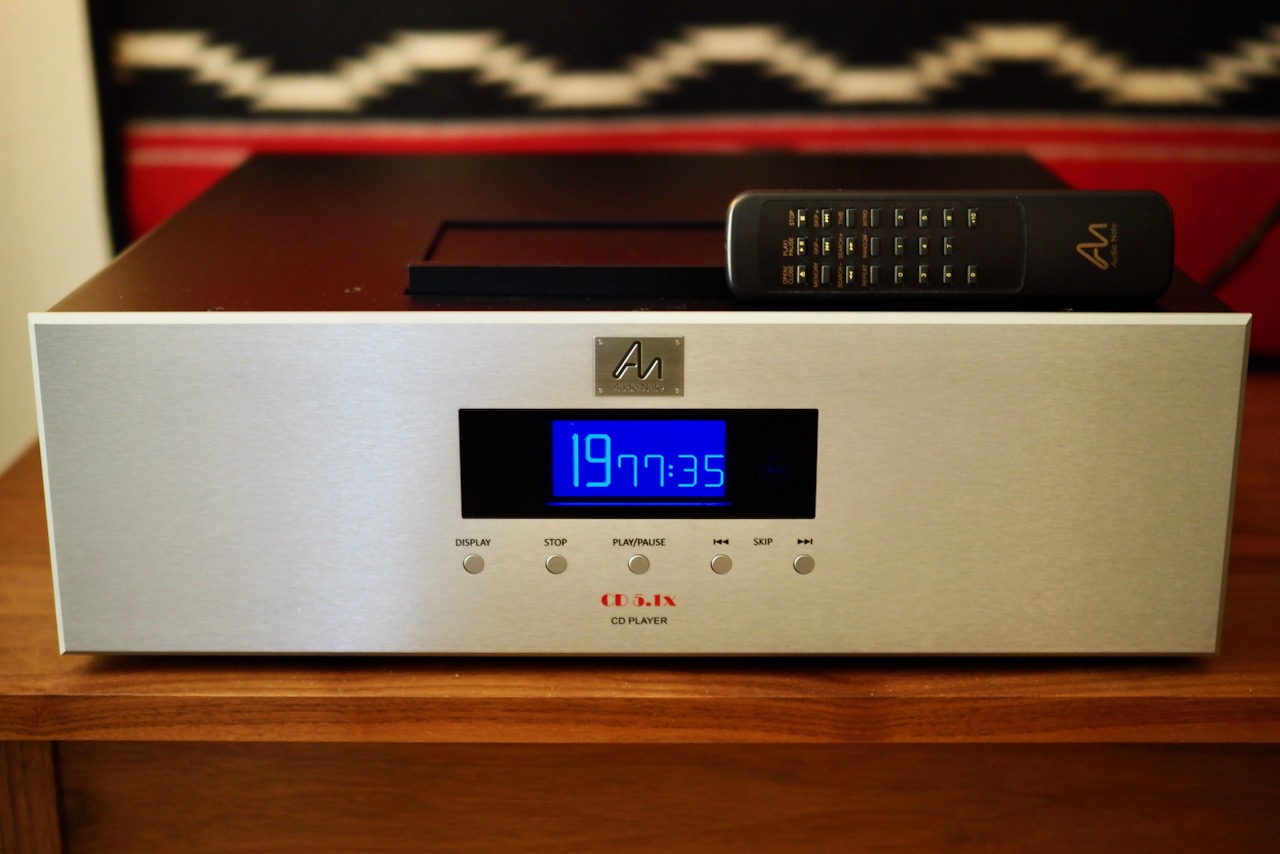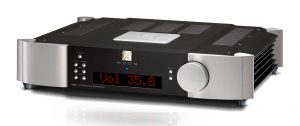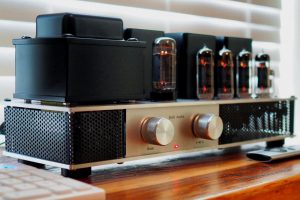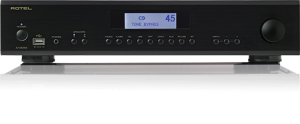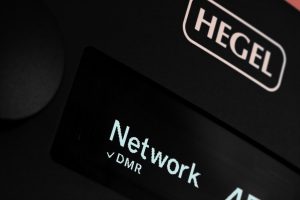Greetings friends, I hope you are doing well!
Today's article is about the new Audio Note (UK) Meishu Phono Silver Tonmeister 300B single-ended-triode (SET) integrated amplifier (MSRP $19,300.00 USD, website link HERE).
Long time readers know I have a special fondness for high-performance integrated amplifiers, as they represent what I consider to be the value peak on the audio cost-performance curve.
I also really like the reduced component count of an integrated amplifier for simplifying an audio system, which makes it easier for me to optimize the audio system's voicing for the best system performance.
I particularly like the approach used for the new Meishu 300B integrated amplifier, which has its preamplifier, 300B amplifier, and phono stage all built into one integrated chassis, which reduces the component count from three down to one.
One of the benefits of an integrated amplifier approach is that it eliminates a lot of potentially sound quality degrading connectors, wires, and solder joints.
For example, going from three separate components to one integrated component like the Meishu means that sixteen female and male RCA connectors and their thirty-two solder joints are eliminated, as well as eight lengths of interconnect wire for the two pairs of interconnects that are no longer needed.
Also, two AC power cables are eliminated, as are two IEC connector female plugs in the chassis. That's a reduction of at least six more lengths of wire, four cable termination connectors, and eighteen solder joints.
Add all that up and that's a reduction of fifty solder joints, twenty-two connectors, and fourteen lengths of wire when going from a separate preamplifier, amplifier, and phono stage to an integrated amplifier—that's a lot!
An integrated amplifier 'sings with one voice'. Another benefit of the integrated approach is that instead of the listener having to optimize the voicing between three separate components to maximize performance, all of that has already been done for you by Audio Note (UK), with the preamplification, amplification, and phono stages already optimized to be a single integrated 'voice' for maximum performance.
Then there's the cost value benefit on an integrated amplifier. To get the same level of performance as a high-performance integrated amplifier like the Meishu, you would have to spend quite a lot more on separate components, not to mention the additional cost of high-quality interconnects and power cables to connect them. It all adds up.
For the frugal among us, putting the money saved with a high-performance integrated amplifier like the Meishu Tonmeister towards better sources, loudspeakers, and cables, typically yields better overall system performance. You get more bang for the buck, at least that's my experience.
I'm not saying that separate components can't have amazing performance, they can for sure, but you can also get amazing performance from a high-performance integrated amplifier like the Meishu.
There is beauty in simplicity. Personally, I just like the idea of having fewer components in my audio system to keep it as simple as possible.
Inside the Audio Note (UK) Meishu Phono Silver Tonmeister 300B Integrated Amplifier
Now let's take a deeper look into the design concepts of the new Meishu 300B SET integrated amplifier.
In the Audio Note (UK)'s Performance Level System nomenclature, the Meishu is a "Level Three" integrated amplifier, whereas the Oto Phono SE Signature I wrote about in Positive Feedback Issue 108 (HERE) is a "Level Two" integrated amplifier, for example.
What that Level Three designation means in overall design terms is that the Meishu utilizes a pure Class A, zero negative feedback, directly-heated, single-ended-triode output stage, with valve rectification.
In Audio Note (UK)'s Performance Level System nomenclature, those design elements combine to provide a higher level of overall performance and refinement compared to Audio Note (UK) Level Two designs.
The "Silver" designation in the Meishu's name means upgrades to the standard version's circuitry with Audio Note (UK) silver internal wiring, Audio Note (UK) copper foil signal capacitors, Audio Note (UK) tantalum film resistors, and Audio Note (UK) HiB C-core output transformers.
Also note the "Tonmeister" designation in the newly redesigned Meishu's name. The new Meishu utilizes the "Tonmeister Voicing Strategy"—more on this voicing strategy in a moment.
The new Meishu also utilizes a new input and driver stage that is very similar to that found in the top-of-the line 211 triode based Jinro, Tomei, and Ongaku integrated amplifiers, with a "… 12AU7 and 5687 driving an in-house designed and manufactured inter-stage transformer for the best energy transfer, evenness and authority. This is the most important, fundamental upgrade over the original design." (from the Meishu webpage HERE).
Also new to the Meishu are the output transformers that were designed specifically for the project by Andy Grove, and "… it is not an overstatement to say that they are superb." (from the Meishu webpage).
The new Meishu also has a new power supply that "… uses only one mains transformer, one 5U4 rectifier valve, and one choke. When this arrangement is optimized, it works extremely well, producing a very homogeneous and 'complete' sound." (from the Meishu webpage).
So what do all those new design elements mean for the enthusiast considering the purchase of a new Meishu?
My take on the design of the new Meishu is that it offers a 300B SET design focus, but takes important design insights from the much more expensive Jinro, Tomei, and Ongaku 211 SET based integrated amplifier product lines (above), and in doing so provides a level of performance approaching that of Audio Note (UK)'s highest-performing and most exotic integrated amplifiers, but at a more accessible price point for audio enthusiasts.
I really like the phono stage design of the new Meishu (above, shown without its shielding in place).
Classic valve phono stages tend to fall into two basic design genres: those like the Marantz Model 7 that use negative feedback (NFB) to achieve RIAA phono equalization; and those like the Harman Kardon Citation IV that use no NFB, and use capacitors and resistors (CR) to achieve RIAA equalization.
So, by analogy, if the Marantz Model 7 phono stage was a 'push-pull amplifier using negative feedback' in its design, then the Harman Kardon Citation IV phono stage would be like a 'single-ended-triode amplifier' with no negative feedback used in its design.
If you guessed that the phono stage in the new Meishu is a zero-feedback, single-ended design, with a CR passive RIAA equalization network, then you would be exactly right.





